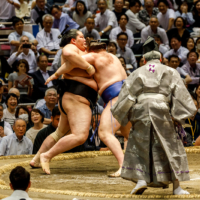It’s a hot afternoon in Harie, a small residential district of Takashima, Shiga Prefecture. But instead of parching my thirst with a bottle of water from a vending machine, I bend down, cup in hand, to scoop some spring water running through one of the many bubbling streams that cross the community.
Known to locals as “shōzu” (pure water), the water is such an integral part of life in Harie that the village itself is nicknamed “Shozu no Sato” — literally, the Village of Water.
For residents like Keiko Maeda, this access to water is much more than just set dressing. Due to Harie’s unique geography within an alluvial fan tucked between the Hira mountain range and Lake Biwa, Japan’s largest freshwater lake, the conditions are just right for a constant stream of mineral-rich spring water to run not just along the community’s streets but through homes via a network of natural springs known as “kabata.”



















With your current subscription plan you can comment on stories. However, before writing your first comment, please create a display name in the Profile section of your subscriber account page.